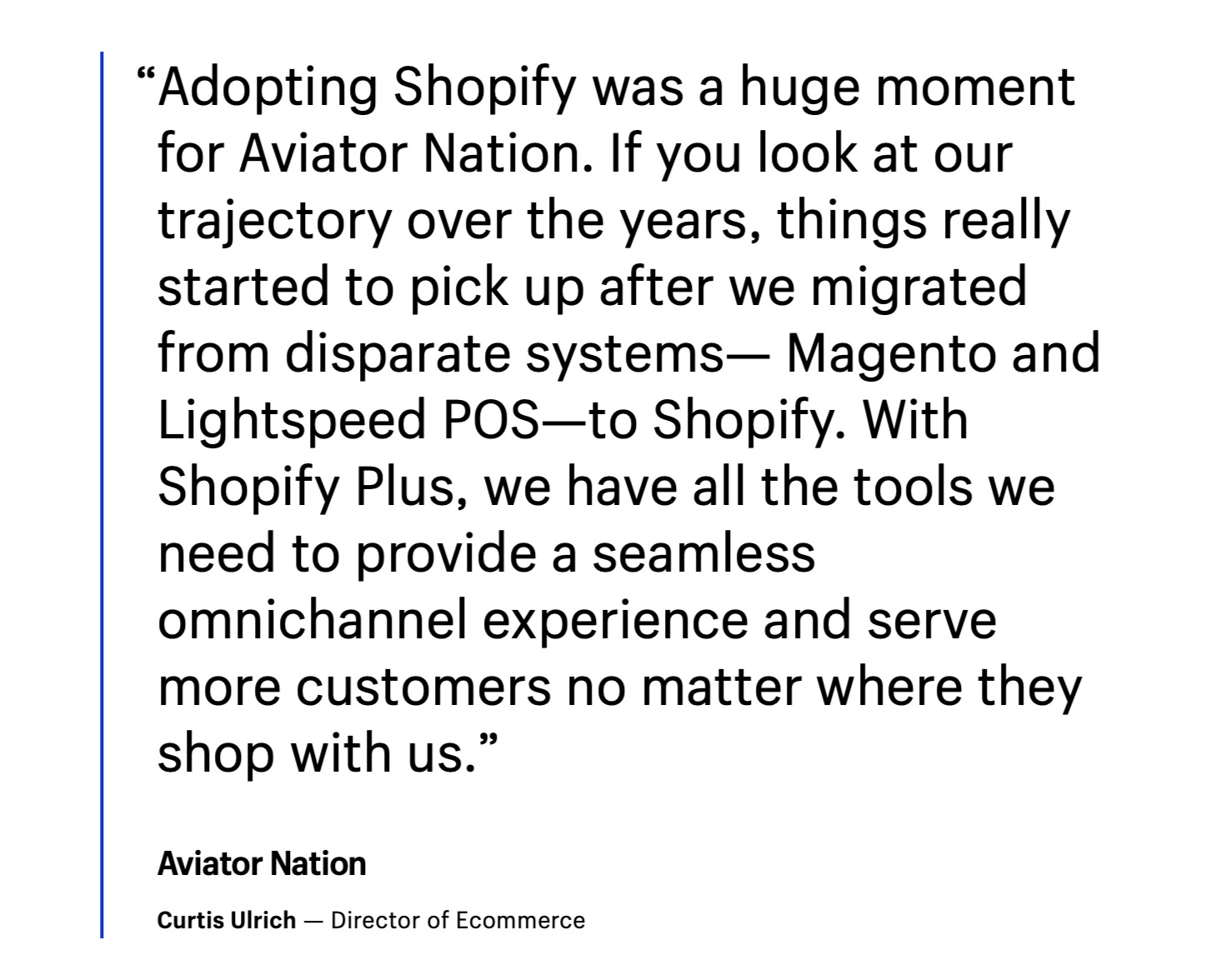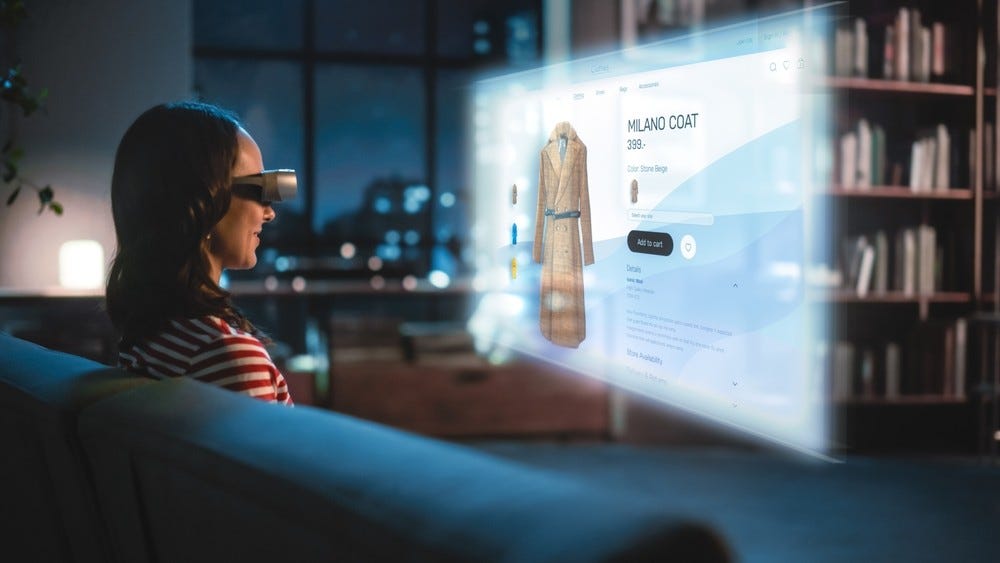#29 - Welcome to the future
Omnichannel growth in 2024. Everlane has Shop Pay without Shopify. Try new clothes in the post office. FedEx new Ecommerce Platform. Aviator Nation on Shopify Plus. The history of Omnichannel.
Hello hello 👋
This week we’re talking about the future, covering topics like this year's Omnichannel growth and FedEx's upcoming Ecommerce platform. To gain insights into what lies ahead, we must delve into the past, examining the history of Omnichannel and recent developments on Everland's online store. Coming back to the present, we discuss unique news, such as people in Paris changing clothes in post offices and Aviator Nation's full embrace of Shopify.
Stay tuned for a journey through time and trends in the world of commerce! But before we time travel all over these insights, please 🙏 for me:
Like this article (♡ icon)
Subscribe if you haven’t
And after reading, leave a comment with your opinions
5 - Omnichannel growth in 2024
In 2024, expect a rapid acceleration of omnichannel retailing, driven by immersive customer experiences like augmented reality fitting rooms. Online-first brands are venturing into physical spaces through pop-ups and partnerships. Despite a mixed U.S. consumer outlook, retailers are adapting by prioritising either physical or online channels. Shopper behavior leans heavily towards online research, with over half using search engines for purchase decisions. This trend is expected to strengthen, prompting physical retailers to enhance their online presence in 2024. Finally, organizational structures are aligning for true omnichannel retailing, with e-commerce and brick-and-mortar managers collaborating for a unified sales channel.
4 - Everlane has Shop Pay without Shopify
Now, Shop Pay, the internet's best performing checkout, works with any online store setup. You can add this high-performing checkout to your current system, just like how Everlane did. This change hints at a possible shift for quick checkout businesses. Shop Pay is answering the request from big retailers, offering its fast checkout to major brands worldwide, even if they're not on Shopify. This means big brands can easily use Shop Pay in their setup, getting fast access to a reliable checkout used by over 100 million eager shoppers, all without changing their whole online store solution.
3 - Try new clothes in the post office
France's post office, La Poste, is piloting in-store changing rooms, resembling bright yellow French mailboxes, in selected branches including two in Paris, one in Lannion, and another in La Rochelle. Customers receiving parcels at these branches can try on their online purchases inside these booths, simplifying the return process by immediately returning ill-fitting items at the counter, eliminating the need for a separate trip. La Poste aims to enhance customer convenience and attract more foot traffic to its branches, addressing the decline in visits due to reduced letter sending. While some retailers express concerns about potential impacts on sales, experts suggest the initiative could benefit them by speeding up returns and minimizing damage to goods.
2 - FedEx new Ecommerce Platform
FedEx is set to launch a new e-commerce platform called fdx, scheduled for this fall, offering online merchants end-to-end solutions for supply chain management, customer sales, and delivery coordination. The platform integrates existing FedEx commerce tools, including those from ShopRunner, acquired in 2020, with upcoming features like a "custom post-purchase experience" for accurate shipment information. In response to Amazon's growing influence in logistics, FedEx emphasizes that it provides digital capabilities and insights to businesses, allowing them to maintain control over the customer experience. The move reflects FedEx's strategy to stay competitive and enhance its services amid challenges from major players in the industry.

1 - Aviator Nation on Shopify Plus
Aviator Nation, a 1970s-inspired apparel brand, upgraded from Magento and Lightspeed to Shopify, streamlining their operations and enhancing customer experience. The move resulted in a 10% revenue growth, efficient handling of 2,000+ monthly online orders, and improved customer service. Shopify's flexibility allowed easy website customization, reducing dependence on external developers.
The brand further improved checkout with integrations like Checkout Blocks and embraced Shopify Plus for lower fees and advanced features, unifying online and in-store transactions. During a recent music festival, they processed over 2,500 orders seamlessly. Same-day shipping for in-stock retail items ordered online became possible, contributing to increased sales.
In summary, Aviator Nation's shift to Shopify marked a transformative moment, empowering them to adapt, grow, and provide a seamless customer experience across channels.

When did “Omnichannel” started?
Preparing for our interview with Jérôme Poussin at Ecommerce Prague (8.2.2024), I discovered an insightful article about the relatively young history of omnichannel. Emerging around 2010, the concept aims at seamless customer experiences across communication channels. Coined by Best Buy in 2003, the term gained momentum in 2010 and became crucial for marketing. By 2015, data revealed strong omnichannel strategies retained up to 89% of customers. Despite predictions of its demise, the COVID-19 pandemic reinforced its importance in maintaining connectedness. In 2023, omnichannel is a standard in consumer-enterprise relationships, continually evolving to enhance the customer experience.






